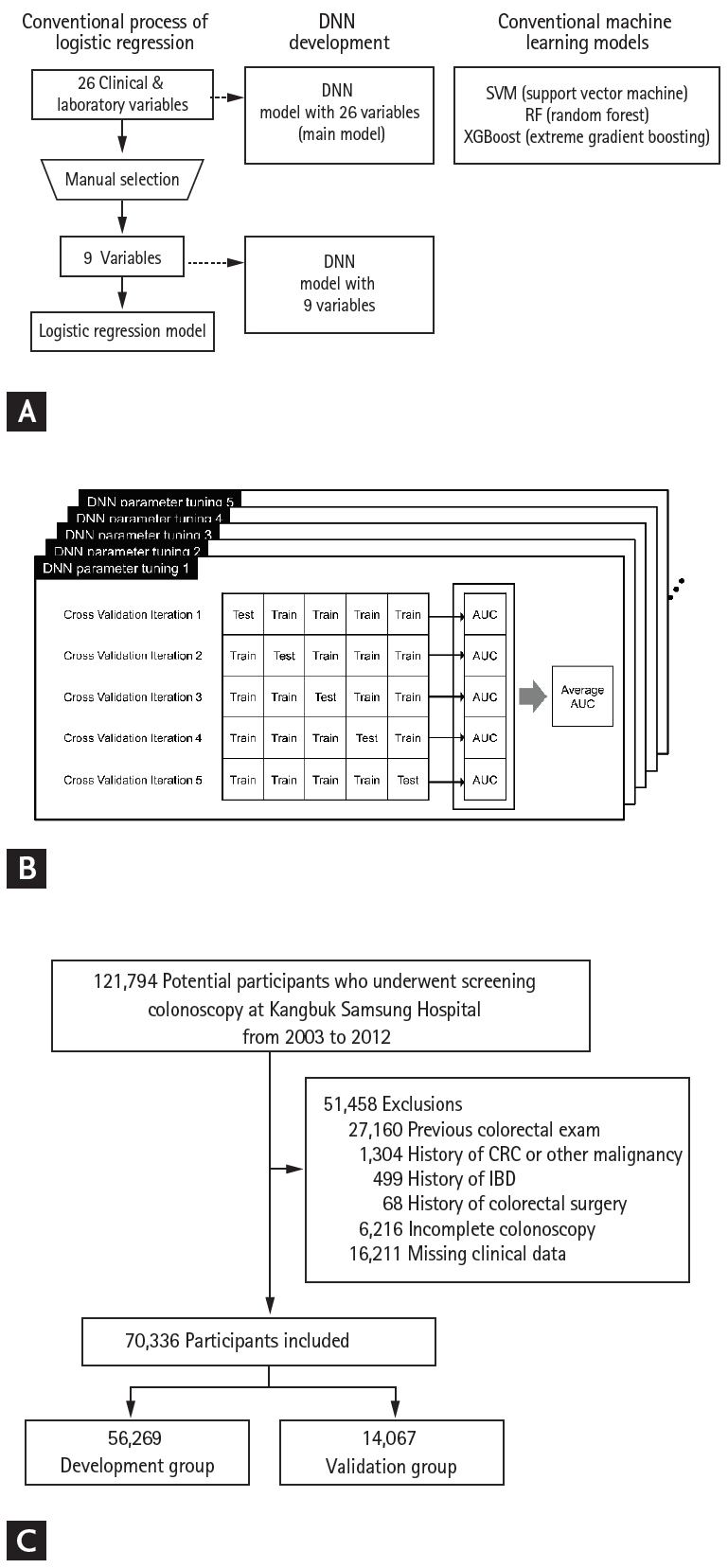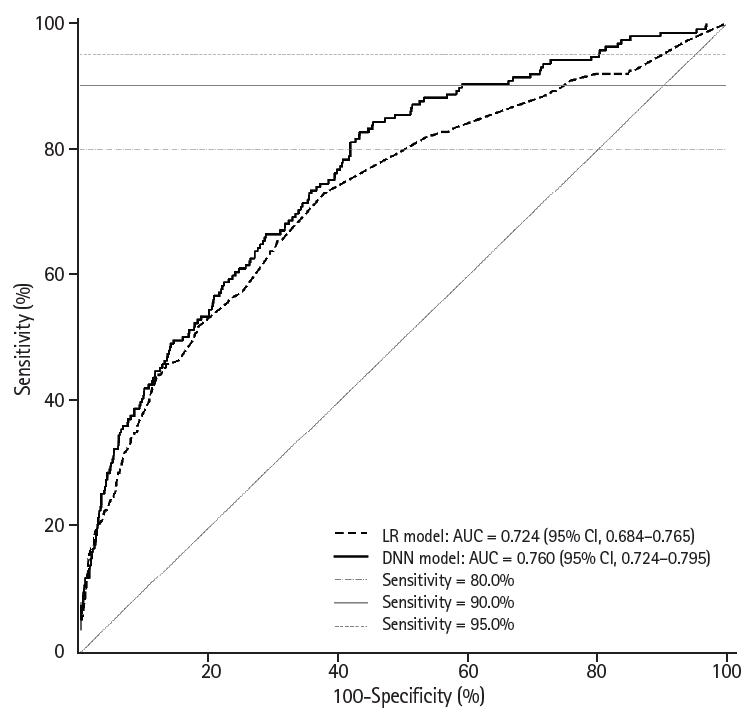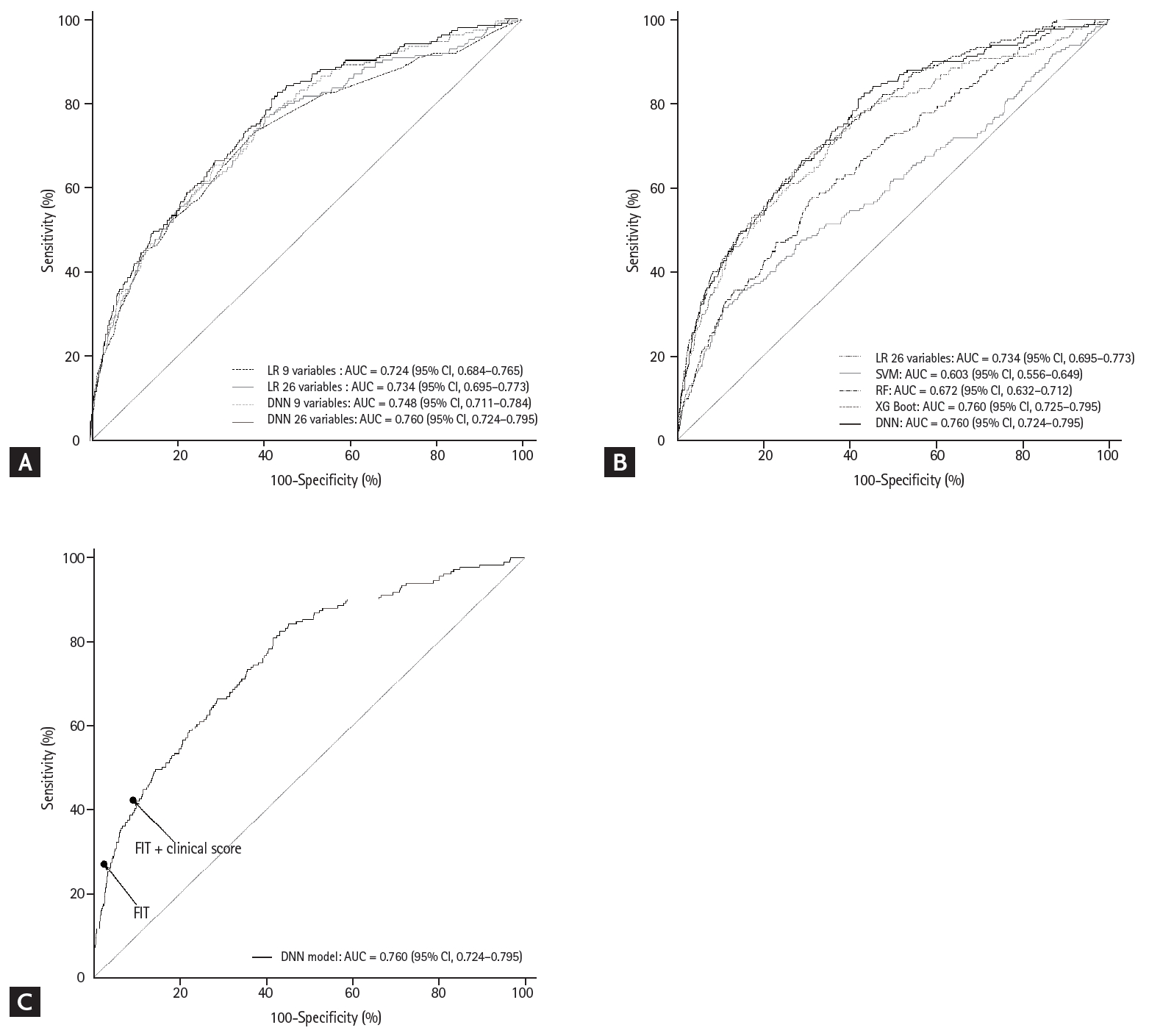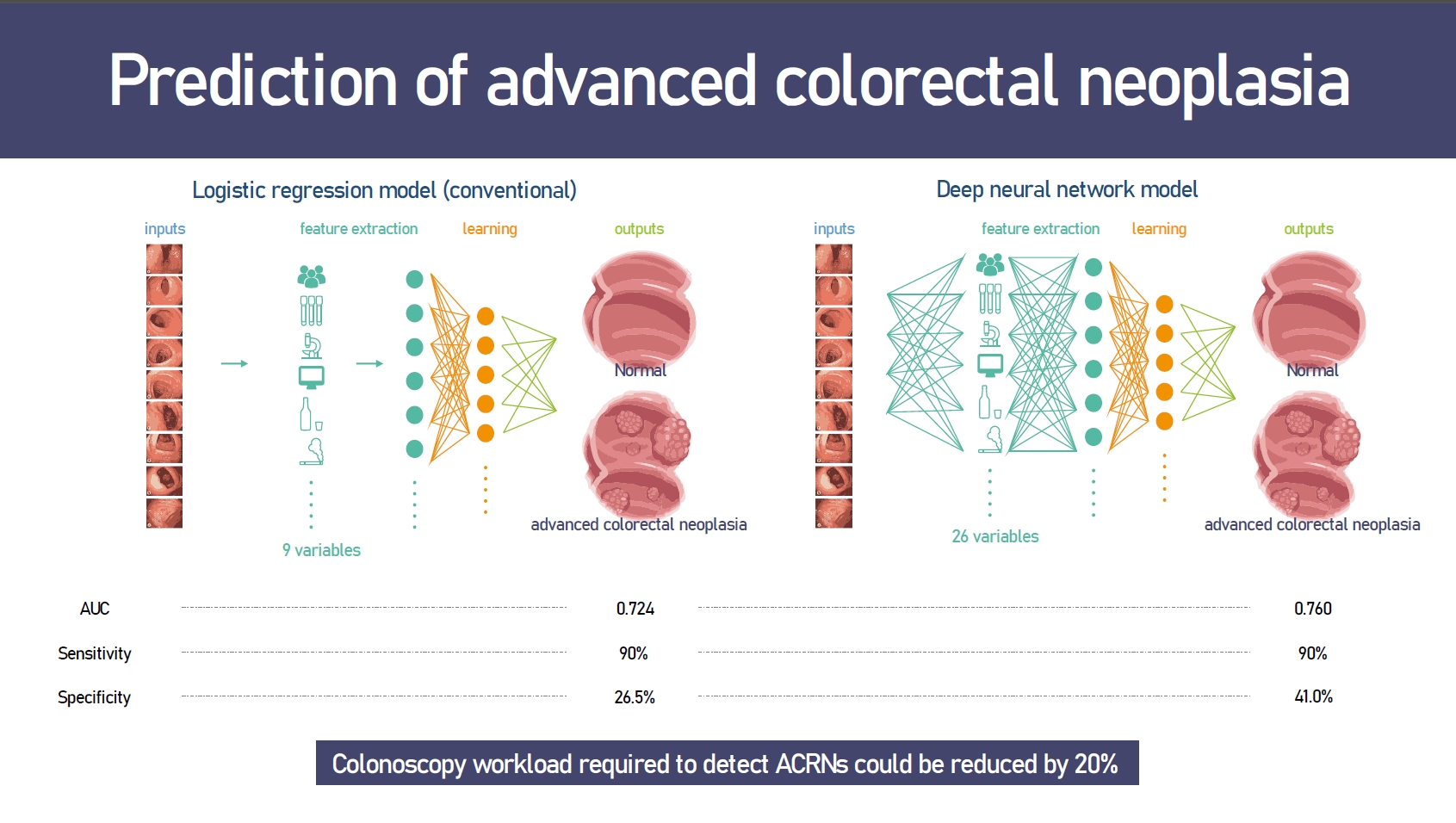1. Ferlay J, Soerjomataram I, Dikshit R, et al. Cancer incidence and mortality worldwide: sources, methods and major patterns in GLOBOCAN 2012. Int J Cancer 2015;136:E359ŌĆōE386.


2. Shaukat A, Mongin SJ, Geisser MS, et al. Long-term mortality after screening for colorectal cancer. N Engl J Med 2013;369:1106ŌĆō1114.


3. Nishihara R, Wu K, Lochhead P, et al. Long-term colorectal-cancer incidence and mortality after lower endoscopy. N Engl J Med 2013;369:1095ŌĆō1105.


6. Yeoh KG, Ho KY, Chiu HM, et al. The Asia-Pacific Colorectal Screening score: a validated tool that stratifies risk for colorectal advanced neoplasia in asymptomatic Asian subjects. Gut 2011;60:1236ŌĆō1241.

8. Lin OS, Kozarek RA, Schembre DB, et al. Risk stratification for colon neoplasia: screening strategies using colonoscopy and computerized tomographic colonography. Gastroenterology 2006;131:1011ŌĆō1019.


10. Yang HJ, Choi S, Park SK, et al. Derivation and validation of a risk scoring model to predict advanced colorectal neoplasm in adults of all ages. J Gastroenterol Hepatol 2017;32:1328ŌĆō1335.


15. Gulshan V, Peng L, Coram M, et al. Development and validation of a deep learning algorithm for detection of diabetic retinopathy in retinal fundus photographs. JAMA 2016;316:2402ŌĆō2410.


17. Byrne MF, Chapados N, Soudan F, et al. Real-time differentiation of adenomatous and hyperplastic diminutive colorectal polyps during analysis of unaltered videos of standard colonoscopy using a deep learning model. Gut 2019;68:94ŌĆō100.


18. Chen PJ, Lin MC, Lai MJ, Lin JC, Lu HH, Tseng VS. Accurate classification of diminutive colorectal polyps using computer-aided analysis. Gastroenterology 2018;154:568ŌĆō575.


19. Ahmed RL, Schmitz KH, Anderson KE, Rosamond WD, Folsom AR. The metabolic syndrome and risk of incident colorectal cancer. Cancer 2006;107:28ŌĆō36.


20. Rhee EJ, Park SE, Chang Y, Ryu S, Lee WY. Baseline glycemic status and mortality in 241,499 Korean metropolitan subjects: a Kangbuk Samsung Health Study. Metabolism 2016;65:68ŌĆō77.


21. Wen CP, David Cheng TY, Tsai SP, et al. Are Asians at greater mortality risks for being overweight than Caucasians? Redefining obesity for Asians. Public Health Nutr 2009;12:497ŌĆō506.


22. Jung YS, Park CH, Kim NH, Park JH, Park DI, Sohn CI. Identifying the optimal strategy for screening of advanced colorectal neoplasia. J Gastroenterol Hepatol 2017;32:1003ŌĆō1010.


23. Futoma J, Morris J, Lucas J. A comparison of models for predicting early hospital readmissions. J Biomed Inform 2015;56:229ŌĆō238.


24. Ogunleye AA, Qing-Guo W. XGBoost model for chronic kidney disease diagnosis. IEEE/ACM Trans Comput Biol Bioinform 2020;17:2131ŌĆō2140.

25. Tahmasebi P, Hezarkhani A. Application of a modular feedforward neural network for grade estimation. Nat Resour Res 2011;20:25ŌĆō32.


26. Keras. Keras: the python deep learning library [Internet]. c2017 [cited 2020 Jul 16]. Available from:
https://keras.io/.
27. Aksoy S, Haralick RM. Feature normalization and likelihood-based similarity measures for image retrieval. Pattern Recognit Lett 2001;22:563ŌĆō582.

28. Kohavi R. A study of cross-validation and bootstrap for accuracy estimation and model selection. In : IJCAI. Proceedings of the 14th International Joint Conference on Artificial Intelligence; 2:1995 Aug 20-25; Montreal, QC. Montreal (QC): IJCAI, 1995. p. 1137ŌĆō1143.

30. Glorot X, Bengio Y. Understanding the difficulty of training deep feedforward neural networks. Proc Mach Learn Res 2010;9:249ŌĆō256.
31. Gibbs MN, MacKay DC. Variational Gaussian process classifiers. IEEE Trans Neural Netw 2000;11:1458ŌĆō1464.


32. Alon G, Kroese DP, Raviv T, Rubinstein RY. Application of the cross-entropy method to the buffer allocation problem in a simulation-based environment. Ann Oper Res 2005;134:137ŌĆō151.


33. DeLong ER, DeLong DM, Clarke-Pearson DL. Comparing the areas under two or more correlated receiver operating characteristic curves: a nonparametric approach. Biometrics 1988;44:837ŌĆō845.


34. Hanley JA, McNeil BJ. A method of comparing the areas under receiver operating characteristic curves derived from the same cases. Radiology 1983;148:839ŌĆō843.


35. Chiu HM, Ching JY, Wu KC, et al. A risk-scoring system combined with a fecal immunochemical test is effective in screening high-risk subjects for early colonoscopy to detect advanced colorectal neoplasms. Gastroenterology 2016;150:617ŌĆō625.


36. Sarfaty M, Wender R. How to increase colorectal cancer screening rates in practice. CA Cancer J Clin 2007;57:354ŌĆō366.


37. Hosmer DW Jr, Lemeshow S, Sturdivant RX. Applied Logistic Regression. 3rd ed. Hoboken (NJ): Wiley & Sons, 2013.
38. Levin TR. Colonoscopy capacity: can we build it? Will they come? Gastroenterology 2004;127:1841ŌĆō1844.











 PDF Links
PDF Links PubReader
PubReader ePub Link
ePub Link Full text via DOI
Full text via DOI Download Citation
Download Citation Supplement 1
Supplement 1 Print
Print



